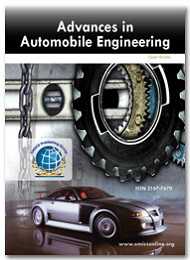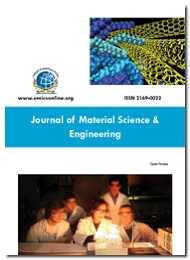Theme: Innovations & Future Trends in Automobile Engineering
Automobile 2015
OMICS Group International cordially invites all participants from across the globe to attend the "International Conference and Exhibition on Automobile Engineering" (Automobile 2015) during September 01-02, 2015 at Valencia, Spain. The International Conference and Exhibition on Automobile Engineering will focus on various topics in automobile engineering and will be based on the theme: “Innovations & Future Trends in Automobile Engineering”. OMICS International Organizes 1000+Global Events inclusive of 300+ Conferences, 500+ Workshops and 200+ Symposiums Every Year across USA, Europe & Asia with support from 1000 more scientific societies and Publishes 500+ Open access journals which contains over 50000 eminent personalities, reputed scientists as editorial board members
Spain is 8th largest car manufacturer in the world. The Spanish automotive industry generates more than 3.5 % of Spain's GDP, giving employment to 9% of the working population. Many foreign car and truck makers - like Volkswagen, Nissan, Daimler AG, Ford, Renault, Opel, PSA Peugeot/Citroën, Iveco etc. - as well as suppliers have facilities and plants in Spain today developing and producing vehicles and components, not only for the needs of the internal market but also for exportation purposes, with the contribution of the automotive industry rising up to the second place with 17.6% out of the country's total exports.
For more information, please visit: Automotive Industry Market Analysis
Automobile 2015 Conference is an automotive engineering expo which is comprised of 12 scientific sessions and 94 sub-sessions which have designed to offer comprehensive review and discussion on the current topics and issues of automotive engineering and auto industry.
In order to make Automobile 2015 a highly successful and respected international automotive engineering conference, just like the various different conference series which are organized by the OMICS Group International, the organizing committee members decided to conduct the following scientific sessions at the :
Session 1. : Vehicle Design and In-Vehicle Electronics
Vehicle design is the development of the appearance, and to some extent the ergonomics, of automobiles. Automotive design in this context is primarily concerned with developing the visual appearance or aesthetics of the vehicle, though it is also involved in the creation of the product concept. Vehicle Design incorporates several areas like Automotive Engineering Design, Advanced Car Body Design, New Chassis Concepts, Surface Technology etc. In-Vehicle Electronics or Vetronics is primarily the use of various electronic components for various purposes like active vehicle safety, engine control, chassis and transmission control, passenger comfort, entertainment systems. This incorporates electronics fields like Chassis System and Integration Technology, On Board Diagnostics/Prognostics/RFID, Automotive Analysis, Vehicle Architecture and Communication Networks, Advanced Driveline and Intelligent Chassis Controls, Vehicle Illumination and Solid State Lighting.
Session 2. :Engine and Transmission Technologies
Ever since the innovations of Étienne Lenoir in 1859 and Siegfried Marcus in 1864, the internal combustion engine has been in fore front of mechanical engineering research. Since its advent, the IC engine has undergone several modification and design configurations. Study of various engine parameters such as Engine dynamics, Engine thermodynamics, Engine Electronics, Supercharging, Turbocharging, Engine Cycle and Efficiency is now one of the major topics of innovation in modern day automotive engineering. Also, transmission and powertrain are also crucial to successful operation of an automobile. Under transmission and powertrain, several important topics can be found like Transmission System and Driveline, Powertrain Controls, Car engineering etc.
Session 3. :Fuel Economy and Emissions
With growing concerns about our natural resources and environmental protection and restoration, one of the major global automotive issues nowadays is that of fuel economy and emission. One of the primary objectives of automotive manufacturers is to design cars which are highly fuel efficient and also cause considerable less air pollution. Topics like Fuel Injections and sprays, Fuels and Lubricants, Alternative fuels, Flow and Combustion diagnostics, Vehicle Energy Management, Advanced combustion systems etc are being extensively researched into various mechanical engineering and multi-disciplinary research institutes and research groups.
Session 4. :Manufacturing Technologies and Testing
Manufacturing and testing of automobiles is the primary operation of the global automotive industry. The manufacturing process of car incorporates mechanical engineers, industrial engineers, manufacturing engineers etc., who utilize topics like Advanced Vehicle Manufacturing Technologies, Advanced Materials, Multi-Material Design and Concepts, Applications of Composite Materials, Cost-Effective Light-weighting Strategies, Joining Technologies etc. The testing and diagnosis of automobiles is far more related to areas such as Product and Performance Development, Vehicle Testing Technologies etc.
Session 5. :Digital Techniques in Automotive Manufacturing Process
Modern industrial operations are nowadays almost completely dependent on the use of digital techniques and specialized softwares. Because of the ease of conducting production and precise engineering which is guaranteed because of digitalization of production process, global automotive industry utilizes digital softwares extensively in almost every step of the automobile manufacturing process. Current trends in digitalization related to automotive industry are Designs, Concepts and simulation, Telematics, Internet of Vehicles and ITS, By Wire Technologies, Advanced Simulation Systems etc.
Session 6. :Advanced Safety Technologies
Road safety and Automobile safety are very important multidisciplinary topics which have been in constant innovation since the production of commercial automobiles. Areas like Vehicle Dynamics and Handling, Advanced and Combined Braking Systems, Automated Safety Technologies, Advanced Safety Systems (including human factors), Pre-Crash, In-Crash and Post-Crash Accident Analysis, Crashworthiness, Damage Mitigation and Occupant protection, Functional safety of alternative propulsion vehicles, Safety of elderly drivers, Safety effects of reduced-mass vehicles etc. are just few of lines of investigation for research institutes involved in the field of accident analysis and automotive safety. Government legislations regarding automotive safety, Crucial drivers in changing trends of vehicle safety, Commercial and societal concerns related to automotive safety etc. are also major areas of concern in the field of automotive safety.
Session 7. :Assisted and Automated Driving
The concept of autonomous cars has been around the field of automotive research since the early 1920s. The first truly successful autonomous vehicle was Carnegie Mellon University’s Navlab project which travelled 3,100 miles cross-country, of which 98.2% was autonomously controlled. The major areas of research in the autonomous vehicle concept are Advanced Driver Assistance Systems, Local Dynamic Maps and Navigation Applications, Object Tracking Applications, Integrated Vehicle Roadside Software, Innovative Automated Driving, Closed Loop Automated Systems, Cooperative Driving Applications etc. Also several legal and social issues are also associated with these driverless cars like Driver Interaction and Influence with Automated and Assisted Driving and legal aspects of autonomous vehicles.
Session 8. :Automotive Human Factors and Ergonomics
Use of ergonomic and cognitive concepts and their application has long been utilized by automobile manufacturers to make the experience of automobiles as much as comfortable and relaxed to the customer. The primary objective of interior design of any automobile is to maximize the comfort and satisfaction of the passengers. Concepts like HVAC Systems and Climate Control, Anthropometric databases, Driver Interfaces, Comfort Factors, Ergonomics and Comfort Design, Driver Friendly Systems, Driving Simulators and Field Studies, Digital Human Body Modeling etc. are primarily considered when designing the interior of an automobile.
Session 9. : Noise, Vibration and Harshness (NVH) Engineering
Noise, vibration, and harshness (NVH) is the study and modification of the noise and vibration characteristics of automobiles. While noise and vibration can be readily measured, harshness is a subjective quality, and is measured either via personal evaluations, or with analytical tools that can provide results reflecting human subjective impressions. Interior NVH deals with noise and vibration experienced by the occupants of the cabin, while exterior NVH is largely concerned with the noise radiated by the vehicle, and include drive-by noise testing. Several factors influence the overall NVH rating of a car like Engine and powertrain NVH, Transient NVH Phenomena, Aero-Acoustic Noise, Experimental NVH analysis method, Advanced NVH simulations, Pedestrian warning sound by Electric Vehicles, NVH of light-weight vehicles etc.
Session 10. :Environmental Implications of Automobiles
Motor vehicle emissions contribute to air pollution and are a major ingredient in the creation of smog in some large cities. A 2013 study by MIT indicates that 53,000 early deaths occur per year in the United States alone because of vehicle emissions. According to another study from the same university, traffic fumes alone cause the death of 5000 people every year just in the United Kingdom. Ever since the advent of automobiles, the persistent problem of air pollution has been in the forefront of environmental research. It includes topic like Impact of air pollution on environment, Recyclable materials in manufacturing, Development of clean combustion and low emission engines, after treatment and emission monitoring, Emissions Control etc.
Session 11. :Hybrid, Plug-in Hybrid and Electric Vehicles
Due to global concern regarding dwindling natural resources and overwhelmingly negative impacts of air pollution, the most lucrative and important sector of automotive research is the research involving hybrid and electric vehicles and also Plug-in Hybrid Electric Vehicles (PHEVs). As research in this field is being most sought after, it includes topics like Power Electronics and Electric Motor Drives, Electric Machines and Actuators, Energy Storage and High Voltage Charging, Electric, Hybrid Electric and Plug-in Hybrid Electric Vehicle System Architectures, Smart Grid, Grid to Vehicle (G2V)/ Vehicle to Grid (V2G), Electrical Infrastructure, Fuel Cells and Applications in Transportation, Modeling, Simulation, and Control of Hybrid, Plug-in Hybrid and Electric Vehicles, Standards, Policies, and Regulations for Hybrid, Plug-in Hybrid and Electric Vehicles, Hybrid Solar Cars etc.
Session 12. :Business Aspects of Automotive Industry
The automotive industry is a wide range of companies and organizations involved in the design, development, manufacturing, marketing, and selling of motor vehicles. It is one of the world's most important economic sectors by revenue. Around the world, there were about 806 million cars and light trucks on the road in 2007, consuming over 980 billion liters (980,000,000 m3) of gasoline and diesel fuel yearly. With the total global production at 89,747,430 commercial vehicles, 2014 saw the highest output of the global automotive industry ever. Several aspects of the automotive industry have been deemed critically important for automotive industry conferences, like Business Aspects of automotive Industry, Financial aspects of automotive industry, Global Powerhouses in automotive industries, Potential high value products and innovative strategies, Auto Recalls - Automotive Industry Statistics, Impact on automotive industry and its management, Automotive industry Analysis, Automotive industry standards and regulations, Automotive Industry – Europe market etc.
Automotive engineering expo 2015 is one of the few global automotive conferences which cover all the fields of automotive engineering. Engineering conferences especially automobile conferences, are multidisciplinary fields which incorporate knowledge from fields like mechanical engineering, chemistry, industrial engineering and to some extend also medicine and psychology also.
Spain is 8th largest car manufacturer in the world. The Spain Automotive Industry generates more than 3.5 % of Spain's GDP, giving employment to 9% of the working population. Many foreign car and truck makers - like Volkswagen, Nissan, Daimler AG, Ford, Renault, Opel, PSA Peugeot/Citroën, Iveco etc. - as well as suppliers have facilities and plants in Spain today developing and producing vehicles and components, not only for the needs of the internal market but also for exportation purposes, with the contribution of the automotive industry rising up to the second place with 17.6% out of the country's total exports.
China Automotive Industry has been the largest in the world measured by automobile unit production since 2008. Since 2009 annual production of automobiles in China exceeds that of the European Union or that of the United States and Japan combined. Indigenous brands include: Beijing Automotive Group, Brilliance Automotive, BYD, Dongfeng Motor, FAW Group, SAIC Motor, Chang'an (Chana), Geely, Chery, Jianghuai (JAC), Great Wall, and Guangzhou Automobile Group. While most of the cars manufactured in China are sold within China, according to automotive industry reports, exports reached 814,300 units in 2011.
Germany Automotive Industry is one of the largest employers in the country, with a labor force of over 747,000 (2009) working in the industry. As per automotive industry news, with an annual output close to six million and a 35.6% share of the European Union (2008), Germany is the absolute leader of auto production in Europe since the 1960s. Currently, five German companies and seven marques dominate the automotive industry in the country: Volkswagen AG (and subsidiaries Audi and Porsche), BMW AG, Daimler AG, Adam Opel AG and Ford-Werke GmbH. Nearly six million vehicles are produced in Germany each year, and approximately 5.5 million are produced overseas by German brands.
Australia Automotive Industry was created in Australia in the 20th century through the opening of Australian plants by international manufacturers. The first major carmaker was the Ford Motor Company of Australia and the first Australian-designed mass production car was manufactured by Holden in 1948. Australian manufacture of cars rose to a maximum of almost half a million in the 1970s (10th place in the World) and still exceeded 400,000 in 2004.
South Africa Automotive Industry is one of South Africa’s most important, contributing at least 6% to the country’s GDP and accounting for almost 12% of South Africa's manufacturing exports, making it a crucial cog in the economy. In 2010, 271 000 vehicles were exported. More than 28 000 people are directly employed in automotive manufacturing, with 65 000 employed in the component manufacturing industry.
European Automotive Industry is crucial for Europe’s prosperity. The sector provides jobs for 12 million people and accounts for 4% of the EU’s GDP. The EU is among the world's biggest producers of motor vehicles and the sector represents the largest private investor in research and development (R&D). To strengthen the competitiveness of the EU automotive industry and preserve its global technological leadership, the European Commission supports global technological harmonization and provides funding for R&D.
Russian Automotive Industry is a significant industry in Russia, directly employing around 600,000 people or 1% of the country's total work force. Russia was the world's 15th largest car producer in 2010, and accounts for about 2% of the worldwide production. The largest companies are light vehicle producers AvtoVAZ and GAZ, while KAMAZ is the leading heavy vehicle producer.
Automobile Engineering is applied to the automotive engineering design, manufacture and operation of motorcycles, automobiles, buses and trucks and their respective engineering subsystems and encompasses major engineering stream like Mechanical Engineering, Electrical & electronics Engineering, Software Engineering, Safety Engineering, Industrial Engineering etc.
Automobile 2015 is an international platform for presenting research about marketing, exchanging ideas about it and thus, contributes to the dissemination of knowledge in marketing for the benefit of both the academia and business. Automobile 2015 is where the future of Automotive engineering. This event brings together researchers and industry personnel to explore and advance the boundaries of automotive engineering according to the current global economic scenario. Automobile 2015 is where Auto manufacturers and Auto OEMs go to gain perspective on the latest platforms, concept designs, emerging technologies and opportunities that will drive the future of the automobile engineering. We bring together business, creative, and technology leaders from the automobile industry for the most current and relevant.
Why to attend???
With members from around the world focused on learning about Automotive Engineering; this is your single best opportunity to reach the largest assemblage of participants from the global auto industry. Conduct demonstrations, distribute information, meet with current and potential customers, make a splash with a new product line, and receive name recognition at this 2-day event. World-renowned speakers, the most recent techniques, tactics, and the newest breakthroughs in the field of Automobile Engineering are hallmarks of this conference.
Why Valencia?
Valencia is the capital of the autonomous community of Valencia and the third largest city in Spain. Valencia was founded as a Roman colony in 138 BC. The city is situated on the banks of the Turia, on the east coast of the Iberian Peninsula, fronting the Gulf of Valencia on the Mediterranean Sea.
Valencia is the home to Ford Espana Valencia Body & Assembly Plant is situated near Valencia and has nearly 21,000 employees. Valencia is among with Barcelona, Porto and Monte Carlo the only European cities ever to host Formula One World Championship Grands Prix on public roads in the middle of cities. The Valencian Community motorcycle Grand Prix (Gran Premi de la ComunitatValenciana de motociclisme) is part of the Grand Prix motorcycle racing season at the Circuit Ricardo Tormo (also known as Circuit de Valencia). Periodically the Spanish round of the Deutsche Tourenwagen Masters touring car racing Championship (DTM) is held in Valencia.
Valencia's main festival is the Falles. The traditional Spanish dish, paella valenciana, originated in Valencia. Valencia is also home to one of the famous footballs clubs of Europe, Valencia C.F., which boasts the iconic Mestalla as its home stadium. Valencia is the only city in Spain with two American football teams in LNFA Serie A, the national first division: Valencia Firebats and Valencia Giants.
For more information, please visit: Automotive Industry Market Analysis
Abstract Submission Details
We warmly invite you to submit your abstract and attend the International Conference and
Exhibition on Automobile Engineering.
Abstract Submission Deadline : August 10th, 2015
Submit your abstract online at Online abstract submission portal(or)
Email to: automobile@omicsgroup.com
To download Abstract Template, please click here: Speaker abstract/Biography template
Terms
Abstracts must be submitted on the understanding that they have not been presented elsewhere (except in the form of a thesis) and are not currently under consideration by another conference. The submitting speaker should ensure that the abstract publication has been approved by all other co-authors.
Modes of Presentation
- Oral presentation
- Poster presentation
Language
All abstracts must be written exclusively in English (including the title, abstract text, author names and affiliations).
Correspondence
Please provide the following:
Presenting author’s contact details including full mailing address, office phone number, email address and fax number
Name(s) of presenting author and co-authors: first name(s) or initials of first name(s), family name (e.g. Jason Wong or J. Wong)
Affiliation details of all authors: Department, institution/hospital, city, state (if relevant), country
Conference Highlights
- Vehicle Design and In-Vehicle Electronics
- Engine and Transmission Technologies
- Fuel Economy and Emissions
- Manufacturing Technologies and Testing
- Digital techniques in Automotive Manufacturing Process
- Advanced Safety Technologies
- Assisted and Automated Driving
- Automotive Human Factors and Ergonomics
- Noise, Vibration and Harshness (NVH) Engineering
- Environmental Implications of Automobiles
- Hybrid, Plug-in Hybrid and Electric Vehicles
- Business Aspects of Automotive Industry
To share your views and research, please click here to register for the Conference.
To Collaborate Scientific Professionals around the World
| Conference Date | September 01-02, 2015 | ||
| Sponsors & Exhibitors |
|
||
| Speaker Opportunity Closed | Day 1 | Day 2 | |
| Poster Opportunity Closed | Click Here to View | ||
Useful Links
Special Issues
All accepted abstracts will be published in respective Our International Journals.
- Advances in Automobile Engineering
- Journal of Material Sciences & Engineering
- Journal of Pollution Effects & Control
Abstracts will be provided with Digital Object Identifier by












